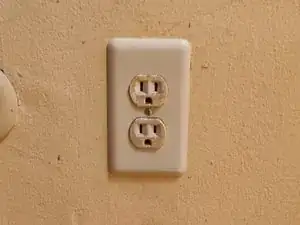
Cover
Es werden einige allgemeine Werkzeuge verwendet, um an diesem Gerät zu arbeiten. Du wirst nicht jedes Werkzeug für jeden Vorgang benötigen.
Electrical installations encompass the installation of electrical equipment, wiring, and fixtures that are designed to provide power, lighting, and other electrical services.
The development of electrical installations in the United States can be traced back to the late 19th century when electricity became a more common means of providing lighting and power in buildings. The first National Electrical Code was developed in 1897 by the National Board of Fire Underwriters, which later became the National Fire Protection Association (NFPA). The NEC has been revised and updated numerous times over the years to reflect changes in technology, building practices, and safety standards.
Electrical installations in the United States must comply with the NEC, which is a set of guidelines developed by the NFPA that establishes minimum requirements for the design, installation, and inspection of electrical systems. The NEC covers a wide range of topics, including electrical conductors and equipment, electrical services, overcurrent protection, grounding and bonding, and electrical safety.
In addition to the NEC, electrical installations must also comply with local building codes, which may have additional requirements or modifications to the NEC. Building codes are enforced by local building departments and typically involve a permit and inspection process to ensure compliance.
The installation of electrical systems typically involves several stages, including planning, design, installation, and inspection. The planning stage involves assessing the electrical needs of the building or structure and developing a plan for the installation of the electrical system.
The design stage involves creating detailed plans and specifications for the electrical system, including the location of electrical equipment, wiring, and fixtures. The installation stage involves the actual installation of the electrical system, which may involve the services of an electrician or electrical contractor.
After the installation is complete, the electrical system must undergo inspection to ensure that it complies with the NEC and local building codes. Once the system passes inspection, it can be energized and put into use.